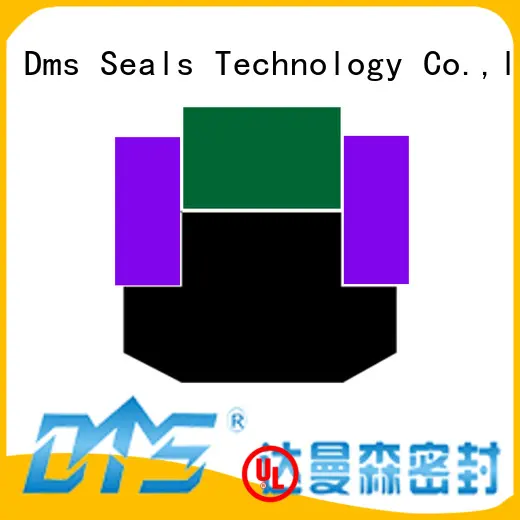DMS SEALS TECHNOLOGY CO.,LIMITED
The Professional Sealing Solution Supplier(O Ring Suppliers & Oil Seal Manufacturers).
DMS Seals - Hydraulic Seals and Oil Ring Seals Manufacturer & Supplier
o-ring seal manufacturer for pneumatic equipment DMS Seal Manufacturer
1. The tests for DMS Seal Manufacturer hydraulic piston seals sizes cover a few aspects. They are mainly electric leakage, overload, PCB performance, overvoltage, and insulation tests. DMS Seal manufacturer was established in 2008 and now has more than 10 years professional experience
2. With wide quality assurance system, DMS Seal Manufacturer sets strict quality standards to ensure the quality of o-ring seal. DMS Seals takes the lead in grasping the development trend of the industry
3. With high-level technicians support, DMS Seal Manufacturer has developed high-performance o-ring seal. Seal we produced has applications in a wide range of fields
4. o-ring seal attracts more and more attentions for its virtues like hydraulic piston seals sizes . The R&D teams have the ability to design and develop seals for various of complicated working condition of sealing system
1. Installation Recommendation
2. Application and properties
Suitable for long stroke, a wide range of fluids and high temperature occasions. The application of heavy duty double acting piston sealing under high pressure conditions is excellent. Applicable to larger piston clearance , it has good leakage control, extrusion resistance and wear resistance in heavy duty and construction machinery cylinder piston sealing system. Good static sealing property, simple groove structure, larger extrusion clearances can be allowed, be able to work in dusty condition.
3. Standard materials
Sealing ring: filled PTFE
O-Ring: NBR / FKM
Back-up ring: POM / PA
4. Working Conditions
Working Conditions | ||||
Diameter Range | Pressure Range | Temperature Range | Speed | Medium |
50 - 350mm | 0 - 50MPa | -30℃ +100℃ | 1.5 m/s | hydraulic oil, flame retardant liquid, water and others |
5. Installation Dimensions
Nominal Size of Packing, and Housing dimensions | L+0.2 | Order No. | ||
D1 | dN | H | ||
50 55 60 | 36 41 46 | 8.5 8.5 8.5 | 9 9 9 | SPGW50*36*8.5 SPGW55*41*8.5 SPGW60*46*8.5 |
63 65 70 | 48 50 55 | 10.5 10.5 10.5 | 11 11 11 | SPGW63*48*10.5 SPGW65*50*10.5 SPGW70*55*10.5 |
75 80 85 | 60 65 70 | 10.5 10.5 10.5 | 11 11 11 | SPGW75*60*10.5 SPGW80*65*10.5 SPGW85*70*10.5 |
90 95 100 | 75 80 85 | 10.5 10.5 12 | 11 11 12.5 | SPGW90*75*10.5 SPGW95*80*10.5 SPGW100*85*12 |
105 110 115 | 90 95 100 | 12 12 12 | 12.5 12.5 12.5 | SPGW105*90*12 SPGW110*95*12 SPGW115*100*12 |
120 125 130 | 105 102 107 | 12 15.5 15.5 | 12.5 16 16 | SPGW120*105*12 SPGW125*102*15.5 SPGW130*107*15.5 |
135 140 145 | 112 117 122 | 15.5 15.5 15.5 | 16 16 16 | SPGW135*112*15.5 SPGW140*117*15.5 SPGW145*122*15.5 |
150 155 160 | 127 132 137 | 15.5 15.5 15.5 | 16 16 16 | SPGW150*127*15.5 SPGW155*132*15.5 SPGW160*137*15.5 |
165 170 180 | 142 147 157 | 15.5 15.5 15.5 | 16 16 16 | SPGW165*142*15.5 SPGW170*147*15.5 SPGW180*157*15.5 |
185 190 200 | 162 167 177 | 15.5 15.5 15.5 | 16 16 16 | SPGW185*162*15.5 SPGW190*167*15.5 SPGW200*177*15.5 |
210 220 225 | 187 197 202 | 15.5 15.5 17 | 16 16 17.5 | SPGW210*187*15.5 SPGW220*197*15.5 SPGW225*202*15.5 |
230 240 250 | 207 217 222 | 17 17 17 | 17.5 17.5 17.5 | SPGW230*207*15.5 SPGW240*217*15.5 SPGW250*222*17 |
260 270 280 | 232 242 252 | 17 17 17 | 17.5 17.5 17.5 | SPGW260*232*17 SPGW270*242*17 SPGW280*252*17 |
300 320 350 | 272 292 322 | 17 17 17 | 17.5 17.5 17.5 | SPGW300*272*17 SPGW320*292*17 SPGW350*322*17 |
Company Features
1. Dms Seals Technology Co.,limited pays high attention to R&D and production of o-ring seal.
2. Technical personnel in DMS Seal Manufacturer guarantee the quality of hydraulic piston seals .
3. Dms Seals Technology Co.,limited has entered a benign development track of sustained profitability and rapid growth under the business principles of hydraulic piston seals sizes . Ask online!
CONTACT US
TEL: +86-757-86235767
Contact Person: Teresa Chen
E-mail:
dms@dmsseals.com
PAY ATTENTION TO US




